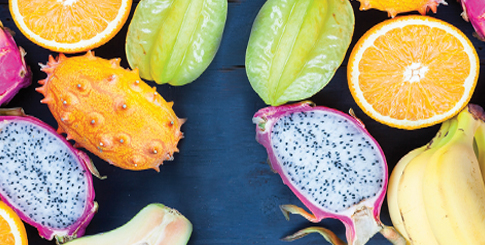While Mother Nature has always played a pivotal role in fresh produce, last year was a ringer, affecting so many involved in growing, shipping, or selling produce in Florida and the Southeast, as well as Texas, Mexico, and the Southwest. As a result, South Florida’s agricultural regions and produce handlers have been doing their best to bounce back.
But, as our sources made us aware, recovery in some instances will take time and the effects may linger throughout 2018.
Doug Tannehill, president of Global Perishable Services LLP in Miami, believes much of the market’s volatility these days is due to climate variability. In light of last year’s natural disasters—hurricanes Harvey, Irma, Maria, and Nate, as well as earthquakes in Mexico—he sees further impact tied to rising food costs and shortages for some commodities.
Citrus growers, already hard hit by citrus greening, were dealt another blow with as much as 70 percent of the state’s crop expected to be lost. Some greenhouses and packing facilities were destroyed, and a number of other crops—from avocados, eggplant, and okra to carambola, tomatoes, and longan were affected too.
“The high sustained winds of Hurricane Irma were extremely damaging for tropical fruit growers in the South Florida growing regions,” confirms Marc Holbik, president of Ecoripe Tropicals, Inc. Many sustained significant damage, he says, causing reverberations throughout the industry.
Ports and Cargo
As a key hub for international trade, a halt in Miami’s maritime commerce affects not only the United States but numerous countries around the globe. PortMiami provides huge advantages to those in the produce industry: not only does it have the most U.S. Department of Agriculture (USDA) staff of any U.S. port of entry—so perishables are processed and released quickly—but the Port Tunnel makes it the only port with direct access to the U.S. highway system.
It is also the closest port to Latin America and the Caribbean, and boasts 228 million square feet of warehouse space with another 13 new bulk warehouses currently under construction.
Fortunately, the path of Hurricane Irma spared PortMiami’s infrastructure; however, the movement of Irma, Maria, Nate, and other storms throughout the region and surrounding islands wreaked plenty of havoc, especially for ships trying to get into port.
Tannehill likened it to a game of dodgeball as the huge ships tried to navigate treacherous waters. “It became a high-stakes game for either getting in and out quickly to load containers or waiting it out at sea, which made our job very difficult.”
Houston ports were deeply affected by Hurricane Harvey, which in turn impacted Miami and the many buyers and sellers with ties to multiple ports. The Houston ship channel was closed to vessel sailing for almost a week, and the closure of government agencies for days halted fumigations and other releases, says Pat Compres, CEO of Miami-based Advance Customs Brokers & Consulting, LLC.



